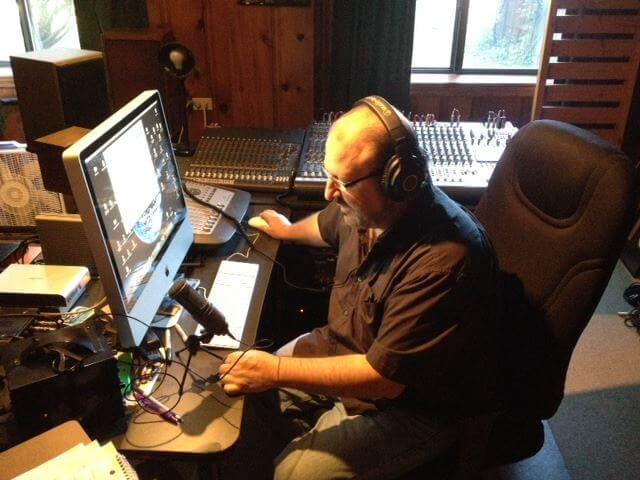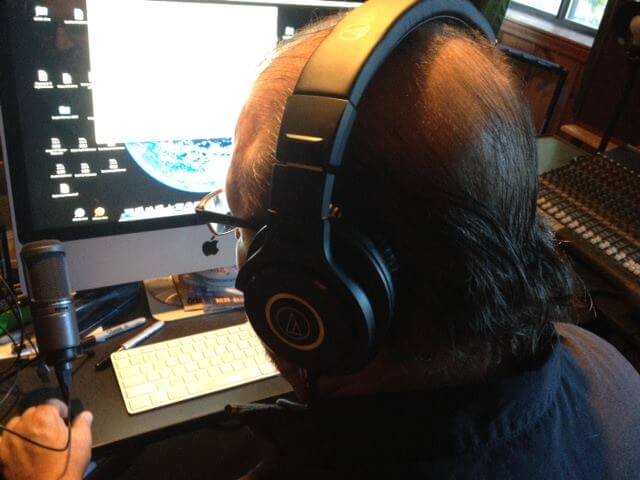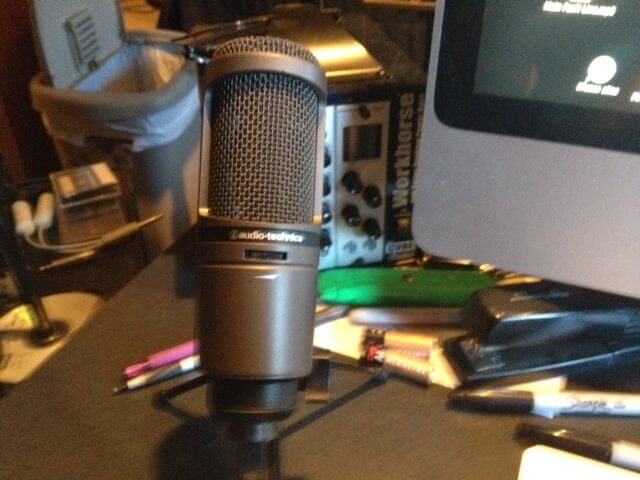We Had A Producer Put the AUDIO-TECHNICA AT2020USBi Mic & ATH-M40x Headphones Through Their Paces. Here’s What He Found…
I tried the ATH-M40X headphones in several applications. I listened to recording and mixing assignments from my audio students, I wore them while tracking a demo session, and I wore them during a mixing session, too. I have been using the same headphones of another brand for many years. I got used to them over time and simply continued to use them because I have a lot of pairs of them. While the AT headphones are bit heavier than the ones I’m used to, they were comfortable enough to wear for extended periods without actually feeling heavy (a welcome feature for any producer or home recorder!).

These phones seal nicely and I found myself pulling one ear off slightly when tracking to hear a bit of the room. For intensive listening or mixing, closed back (or sealed) phones are great. Sonically the AT headphones have a wide frequency response – nice bright highs, without being harsh, smooth lows and plenty of mid-range. It sounds like a very flat response, which is what I want from studio headphones. I use headphones to listen for details and for stereo placement (soundstage and panning), and the ATH-M40X cans were excellent for this. I also like the cable, which unplugs at the phones, and that two cables come with them- stereo ¼ inch and stereo mini. It’s not often that using a new product makes me consider switching from what I currently use, but I am certainly considering buying a bunch of these headphones for my studio now.

Moving on to the mic, I am familiar with the standard XLR version of the AT2020. My production work does not involve podcasting or recording directly into software with a USB mic, as I work in Pro Tools using an interface, and various preamps to get the kind of sounds I want. So—in order to test the USB version of the mic, I downloaded Audacity and recorded directly through the USB input on my Mac. Because I am used to recording voices and instruments through one of my nicer preamps, I did somewhat miss the clarity and sparkle that a preamp can bring to a good mic. But for recording voices straight into a software recording program – the AT2020USBi sounds remarkably good. I was able to record clean, clear full-range vocal sounds. The built-in volume control on the mic is also very useful, making it possible to adjust the level on the fly while recording. I also like the small tripod stand that is included with the mic (in addition to a regular mic clip for a mic stand). The tripod stand is very handy. Setting up the mic on the tripod, plugging it in and getting a recording set up is fast and easy. For a podcaster who is not an audio engineer, I can totally see this being an indispensable microphone. Bottom line – I am impressed with its functionality and sound. I’d recommend it to anyone wanting to do quick voice recordings for interviews and podcasts.

ABOUT THE AUTHOR
Mark Robinson is a recording artist, producer and guitarist in Nashville, TN. In addition to producing Roots and Americana artists and touring with his band, Mark teaches in the Audio Department at the Art Institute of Tennessee.
